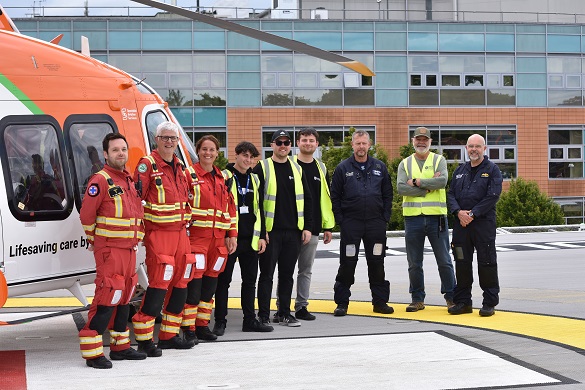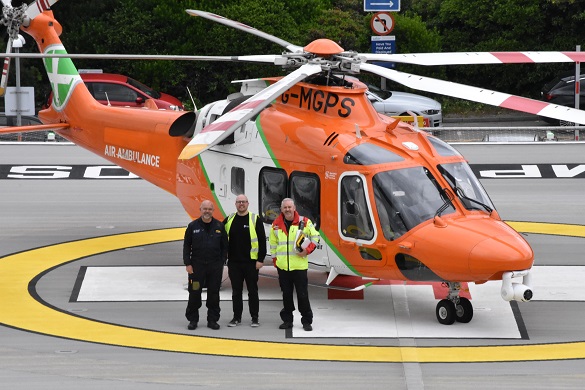
University of Liverpool researchers from the School of Engineering measured wind flow from air ambulance helicopters during take-off and landing, in order to better understand the local aerodynamic environment and the effect on the public and patients.
Air ambulances provide rapid-response lifesaving service to patients in need of critical care. Collectively, air ambulance charities complete an average of 126 missions a day in the UK.
Hospital helipads, however, are often retrofitted to existing structures, such as the top of buildings or in carparks. The effect of the air flow from the air ambulances on both patients and the environment around the helipad is currently not well understood.
A team from the University of Liverpool, led by Dr Neale Watson of the Flight Science and Technology Group alongside PhD students David Souza Branco and Daniel Newton-Young, partnered with Green Deck Operations and Southampton General Hospital to perform the study.

Conducted over a three-day period, flow measurement data was collected for twelve air ambulance operations to and from the hospital helipad, including two different aircraft types. Thanks to Dorset and Somerset Air Ambulance and chief test pilot Mario Carretta, flow measurements during dedicated pre-planned take-off and landings manoeuvres were also completed.
The data collected, along with recorded flight data from the helicopters, will be used to assess the air speed and turbulence generated by air ambulances. This is valuable as they often operate close to the public and will help us better understand the potential effects on patients and those unsteady on their feet.
Providing data to validate computational models of helicopters operating near helipads, it may also help improve the design of new helipads, reducing risk to the public, as well as operating costs.
